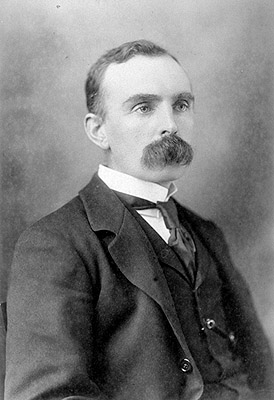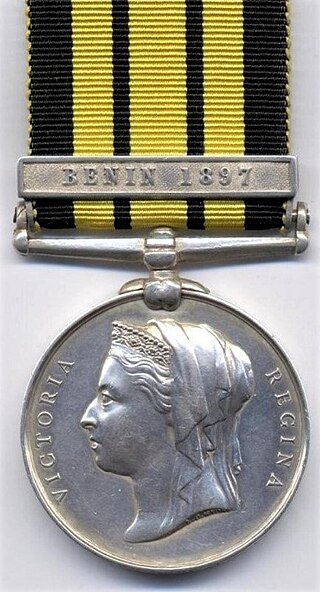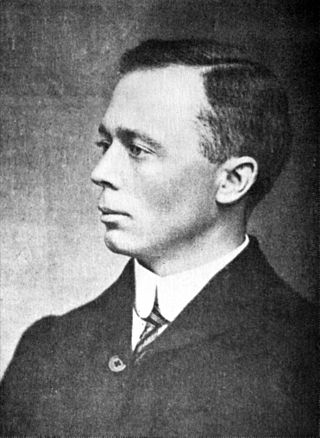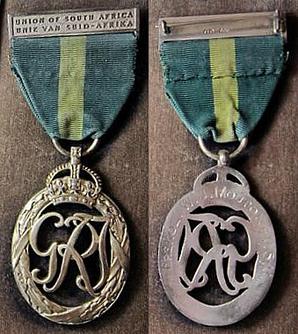This is a survey of the postage stamps and postal history of British East Africa.

The British Central Africa Protectorate existed in the area of present-day Malawi between 1891 and 1907.

Richard Lydekker was an English naturalist, geologist and writer of numerous books on natural history.
Colonel Sir Henry George Lyons FRS was a British geologist and director of the Science Museum in London.
Henry Melville Taberer was a South African cricketer who played in one Test match in 1902. He was the son of the Revd C. Taberer and was born at a mission station in Keiskammahoek, Cape Province.

John Walter Gregory,, was a British geologist and explorer, known principally for his work on glacial geology and on the geography and geology of Australia and East Africa.

Charles Hedley was a naturalist, specifically a malacologist. He was born in Britain, but he spent most of his life in Australia.
Events from the year 1808 in the United Kingdom.

Frederick Vincent Theobald FES was an English entomologist and "distinguished authority on mosquitoes". During his career, he was responsible for the economic zoology section of the Natural History Museum, London, vice-principal of the South-Eastern Agricultural College at Wye, Kent, Professor of Agricultural Zoology at London University, and advisory entomologist to the Board of Agriculture for the South-Eastern district of England. He wrote a five volume monograph and sixty scientific papers on mosquitoes. He was recognised for his work in entomology, tropical medicine, and sanitation; awards for his work include the Imperial Ottoman Order of Osmanieh, the Mary Kingsley Medal, and the Victoria Medal of Honour, as well as honorary fellowships of learned societies.

The Ordnance BL 15-pounder, otherwise known as the 15-pounder 7 cwt, was the British Army's field gun in the Second Boer War and some remained in limited use in minor theatres of World War I. It fired a shell of 3-inch diameter with a maximum weight of 15 pounds (6.8 kg), hence its name which differentiated it from its predecessor '12-pounder' 3-inch gun which fired shells weighing only 12.5 pounds (5.7 kg).

The Ordnance BL 12-pounder 6 cwt was a lighter version of the British 12-pounder 7 cwt gun, used by the Royal Horse Artillery in the late 19th and early 20th centuries.

The East and West Africa Medal, established in 1892, was a campaign medal awarded for minor campaigns that took place in East and West Africa between 1887 and 1900. A total of twenty one clasps were issued.

Henry Harold Welch Pearson was a British-born South African botanist, chiefly remembered for founding Kirstenbosch National Botanical Garden in 1913.

The Natal Observatory was an astronomical observatory in the Colony of Natal from 1882 to 1911. The most important work carried out there was a study of the motion of the moon.

The Efficiency Decoration (South Africa), post-nominal letters ED, was instituted in 1930 for award to efficient and thoroughly capable part-time officers in the Citizen Force of the Union of South Africa after twenty years of service. The decoration superseded the Colonial Auxiliary Forces Officers' Decoration.

Acupalpus is a genus of insect-eating beetle species. Its representatives are found across Europe, Asia, and North America.

John Henry Middleton was an archaeologist and a museum director.
The Minerals Council South Africa is a South African mining-industry employer organisation. Its members include famous South African mining houses such as Anglo American, De Beers, Gold Fields and Harmony. In its current form, it was founded in 1968 as the Chamber of Mines, a South African wide organization. Prior to that year, it has its early origins as the Transvaal Chamber of Mines in 1887, then evolved over many years reforming as the Witwatersrand Chamber of Mines in 1889, the Chamber of Mines of the South African Republic from 1897, Transvaal Chamber of Mines from 1902 and lastly from 1953 until 1967 as the Transvaal and Orange Free State Chamber of Mines. On 23 May 2018, the South African Chamber of Mines rebranded themselves as the Minerals Council South Africa.
Sydney Samuel Hough FRS was a British applied mathematician and astronomer.
Herbert Watkins-Pitchford FRSE CMG was a British veterinarian. In 1896, with Arnold Theiler, he was the first to create a successful vaccine against the viral disease of cattle rinderpest.












